- Home
- Tom Clancy
Battle Ready Page 2
Battle Ready Read online
Page 2
Not surprisingly, the two men connected easily. Both men listened well and were not reluctant to express their views.
Butler’s first words to Zinni made it clear that he would not play favorites. He’d call the pitches as he saw them. But a successful outcome to the inspections was all up to the Iraqis. If they opened up and came clean with their missiles and WMD, he would give them a clean bill of health, and they’d get their reward—the lifting of the draconian sanctions imposed as a consequence of their invasion of Kuwait in 1990.
So far they had shown zero inclination to come clean—anything but—while crying crocodile tears over their fellow Iraqis, who were enduring the terrible sanctions imposed by the American Satan. (Saddam’s henchmen, meanwhile, lived royally in palaces.)
When it came down to the naked truth, Saddam’s regime was far more interested in keeping their WMD and missile programs than in lifting the sanctions. Yet if they could get the sanctions removed while keeping their WMD, all the better.
Butler had no illusions about the other players in this high-stakes game, either: he was well aware that the Americans had their own agenda—not to mention the UN bureaucracy, the French, the Russians, the Chinese, and everyone else with a stake in what went on inside the nation with the world’s second-largest proven oil reserves . . . a nation whose government was arguably the most repressive since Stalin’s USSR.
The Iraqis, well aware of these agendas, played everyone off against each other, trying various gambits aimed at ending or at least weakening UNSCOM—from conning Butler, to putting a wedge in the Security Council, to appealing to the Secretary-General for a diplomatic solution (meaning a diplomatic surrender to Iraq). The Iraqis rightly believed that the French, Russians, and Chinese would stand to gain if the sanctions were removed; but their backing had conditions. It had to be covered over by a mask of support for the previous resolutions calling for disarmament. The Iraqis also rightly believed that the Secretary-General and his staff were hopeful of attaining a “diplomatic solution,” even if that meant sacrificing the Security Council’s goal of achieving Iraqi disarmament.
The U.S. agenda was even more subtle and complex. The Americans were increasingly coming to understand that disarmament would never happen with Saddam in power. It was therefore not in their interest for the Iraqis to be seen to comply with UN directives and thus to have the sanctions lifted. In the American view, if Saddam appeared to comply with the inspectors, seemed to meet the conditions set by the UN resolution, and was given a clean bill of health, then he would no doubt restart the WMD programs he had not successfully protected from inspection.
As time passed, the Americans’ goal for Iraq shifted from the WMD-SANCTIONS equation to regime change—a goal they could not openly advocate because of the UN resolutions they had backed. Yet it was clear they had no intention of dropping the sanctions as long as Saddam Hussein’s regime ran Iraq.
The American policy shift did not make Richard Butler’s job any easier. It obviously meant there was no motivation for Saddam to comply with the UN conditions. If the regime and not the WMD was the issue, then there was no reason for them not to keep the WMD programs. . . . Of course, that was an excuse and not a reason. Saddam intended to keep his programs no matter what.
OVER THE next months, the Iraqis did their best to scam Butler. The scam didn’t work. As they realized he was not a pushover—and was becoming increasingly exasperated by their lies and tricks—they ratcheted up the stakes with attempts at intimidation. By the end of October 1997, they were putting more and more obstacles in the way of the UNSCOM inspectors, and making serious and quite naked threats. At this point, they had two immediate goals: to protect several key sites they had designated “presidential”; and to remove anything “American” from the inspection process, including the U-2 flights. (Of the approximately one thousand UNSCOM inspection staff, about a quarter were American.)
Meanwhile, the Iraqi failure to cooperate had provoked CENTCOM contingency plans for retaliatory air strikes. Though there had been U.S. strikes against the Iraqis before Zinni became CINC, they had been relatively limited. Zinni’s strikes were intended to hurt.
The crisis came to a head in early November, when the Iraqis ordered all the American inspectors to leave Iraq and threatened to shoot down the U-2. Although hitting the high-flying aircraft would have taken a very lucky shot, it was possible.
The question: How to respond to the threat? A U-2 mission was scheduled for November 10. Obviously, an attempt to knock it out would be followed by American bombs. But was the threat alone reason enough to hit Saddam?
That was Zinni’s position. He did not favor flying the mission, preferring instead to strike Iraq immediately (based on the threat), or else to punish them in other ways, such as increasing the airspace in the no-fly zone/no-drive zone enforcement area.3
But Washington thought otherwise. Their decision was to fly the U-2; and Zinni was ordered to be prepared to conduct immediate air and missile attacks on Iraq if the plane was fired upon. In preparation for the strike, he flew out to the friendly countries in the Gulf to secure agreements to use their airspace, bases, and territorial waters for the strike—a round of visits he would make several times as head of CENTCOM.
On the way, he visited the U-2 pilots at their base in Saudi Arabia. There he learned that the squadron commander had decided to fly the flight himself, an act that impressed Zinni, who later awarded him an air medal for flying into the engagement zones of hostile Iraqi surface-to-air missiles.
Getting agreement from the friendly leaders in the region was not automatic. They were nervous about the strike. Though none had any illusions about the Iraqi leader, they all had a great deal of sympathy for the long-suffering Iraqi people—Arabs, just as they were. A solution that did nothing for the Iraqi people made no sense to them. Thus they all backed an attack that would remove Saddam, but in their minds, yet another round of “pinprick” bombings only made him stronger.
In the end, however, they agreed to a strike if the U-2 was fired upon. Despite their serious questions about the benefits of the U.S. air strikes, they always came through with their support (contrary to U.S. media reports), but preferred to keep the extent of their support private.
The U-2 flew as scheduled on November 10. During the flight, Zinni sat with senior Saudi leaders in the Saudi Ministry of Defense in Riyadh, but in direct communication with CENTCOM’s air operations center, ready to give the order to strike at the first indication that the plane was threatened.
As had often happened before, Saddam’s threat turned out to be hollow. The flight was uneventful.
On November 14, in the face of the Iraqi demand to remove the Americans, Butler evacuated the entire contingent of inspectors; but after several days of intense diplomatic activity, they were all able to return—though, once again, with less freedom to operate than before. Every “diplomatic solution” lessened UNSCOM’s ability to get the disarmament job done.
Meanwhile, the Iraqi lies and threats did not stop; and over the next months, Saddam raised the stakes again and again—always probing for weaknesses, always trying to limit UNSCOM’s effectiveness.
In response, CENTCOM built up forces in the region to be ready to strike if the inspectors were no longer able to do their business. This operation became known as “Desert Thunder.”
In February, Secretary of Defense Cohen and Zinni conducted a four-day trip to eleven countries to gain support for a major air strike if Butler’s inspectors were unable to carry out their mission. By February 17, when a confrontation with Saddam seemed imminent, President Clinton announced in a televised speech that the U.S. would act if he did not cooperate with the inspectors. Zinni briefed the President and key cabinet members on the planned strike and defense of American allies in the region.
But once again Saddam made a last-minute retreat. A February 20 visit to Baghdad by UN Secretary-General Kofi Annan got an agreement from Saddam to resume cooperation with Butler
; yet it was clearly only a matter of time before this cooperation would collapse.
Meanwhile, the U.S. forces that had been added to the units already in the region remained in the Gulf, poised to strike.
DURING THE target selection process for Desert Thunder, the President had injected a new and unprecedented element into the planning—he had clearly begun seriously to face the question raised by the likelihood that Saddam would finally block UNSCOM’s work. “Can we militarily eliminate Saddam’s weapons of mass destruction program?” the President asked Zinni. Previous air strikes had simply punished the Iraqis in the hope of forcing their cooperation. Now he was asking whether bombing could accomplish militarily what the inspectors seemed no longer able to do on the ground.
Zinni’s answer at that point was negative. “We don’t know enough about the WMD program,” he said, “much less where the components of the program are. That’s why the inspectors are in there.”
But Clinton persisted. “What can be done militarily about the WMD?” he kept asking. “To what level can we take them out?”
As time went on, Zinni began to come up with answers.
Once they are built, WMD are relatively easy to hide. But the facilities and processes that are used to build them are much harder to conceal. Zinni’s people knew quite a lot about these. The delivery systems and the fuels that powered them were vulnerable, as were the security systems and personnel that protected the programs; the various documents, information, materials, and the research-and-development operations; and the special and difficult-to-acquire machinery required to fabricate high-tolerance parts (such as centrifuges needed to separate fissile uranium from its more stable forms).
Whenever an air strike was imminent (normally tipped off by a buildup of CENTCOM forces in the region as tensions mounted), the Iraqis would move the more vulnerable elements of their WMD programs out of harm’s way. These were the elements that could be taken out . . . if they could be hit before they’d been moved to safety.
“The Iraqis are allowed to have certain missiles,” Zinni reported to the President. “But within that capability, they can research and develop an expanded capability, which at some point can be turned into a delivery system. We can eliminate that. We can bomb their missile facility.
“They also have experimental, developmental programs on fuel for missiles and rockets. We can take these out.
“We know the security forces charged with protecting WMD program information, documents, materials, and R & D studies. The Special Republican Guard is charged with these missions. We can hit them.
“We know the facilities where they keep high-tolerance machinery that is necessary for a nuclear program. We can hit those facilities.
“And we can add targets vital to the regime, like their intelligence headquarters and the Ba’ath party headquarters. Taking out such targets will do serious damage to their command and control capabilities.
“Taking out all these things will not end forever their WMD program,” Zinni said in conclusion. “If the strike goes well, if we are really lucky, the best we can do is set back their programs for two years. It will take about that much time to reconstitute and replace what we’ve destroyed.”
With the President’s approval, Zinni was given the go-ahead to plan for striking these targets.
Desert Viper
Butler and his UNSCOM inspectors soldiered on, but with ever-increasing difficulties. From May 1998 to the end of that year was a time of almost constant crisis.
Though UNSCOM was intended to be a verifying and not an investigative body, the Iraqi obstacles to its proper functioning had required the creation of an investigative and forensic unit. In June 1998, the UNSCOM investigations discovered long-sought smoking guns—stores of Scud-specific propellants and incontrovertible evidence of VX production (one of the most vicious of the nerve agents4).
Because the propellants could be used only for Scuds, there was no reason for the Iraqis to have kept the stuff around—if, as they had long claimed, they had destroyed all their Scuds.
The Iraqis were later proved to have produced close to four thousand liters of VX long ago—after claiming far lower estimates. “But of course,” they told UNSCOM, “we’ve destroyed all that we made during the years they had actually made the stuff.”
The UN resolution demanded UNSCOM verification, but the Iraqis always blocked UNSCOM from verifying anything significant.
Naturally, UNSCOM successes did not sit well with the Iraqis.
On August 5, the battle entered its final phase, when the Iraqis officially suspended UNSCOM’s disarmament work. Though Kofi Annan and others shuttled to all the usual capitals in an effort to attain another “diplomatic solution,” by October 31 no one serious doubted that the work of UNSCOM was finished. No one knew how the end would come—whether the Iraqis would throw the inspectors out, or the inspectors would give up and walk out—but one way or another it was certain that the UNSCOM operation in Iraq was untenable.
When that happened, the heavy air strike would inevitably follow.
As that moment approached, Secretary of Defense Cohen, communicating through General Hugh Shelton, the chairman of the Joint Chiefs of Staff, directed Zinni to prepare two attack plans—a heavy option, and a lighter one. The heavy option would attack many targets over several days. The lighter option would be shorter, and hit fewer targets.
Though he could have lived with either option, Zinni preferred the heavier. “If you’re going to hit him, hit him,” he told the Joint Chiefs.
ON THE SEVENTH of November, he flew up to Washington to brief the plan.
If he thought the briefings would be easy, and followed by an automatic approval of his plan, he was wrong.
A briefing with the Joint Chiefs was held in the small Pentagon conference room called “the Tank.” When Zinni had finished, the chairman called for a vote on the options.
To say that the vote surprised Zinni was an understatement; the vote itself made no sense. Not only was there no serious discussion beforehand, nor to his knowledge had there been earlier sessions to discuss the options, but, most important, the Joint Chiefs were not in Zinni’s chain of command (which went directly through the Secretary of Defense to the President). The CINCs are operationally independent of the Joint Chiefs, whose primary job, in their Service Chief role, was to provide the CINCs with the personnel and equipment they needed to do their job. In other words, to Zinni the vote was meaningless (though no CINC casually ignores the recommendations that the JCS gives on employment of U.S. forces). He was even more shocked when the JCS voted 4 to 2 for the lighter option, after he had recommended the heavier one. Since there had been little discussion before the vote, the reasons for their choice were unclear. Whatever the reason, Zinni could sense their nervousness: Going against the CINC’s recommendation made them all uneasy. None of them liked to second-guess a field commander.
Though Zinni repeated that he could live with either option, his difference with the Chiefs remained. Since the place to resolve their difference was higher up, General Shelton recommended to Secretary Cohen that Zinni attend a meeting of the principal cabinet members and the President at Camp David in order to discuss the options.
The next day, November 8, he flew out to Camp David.
The meeting was held in the wood-paneled conference room of the main cabin. Bill Clinton, seated at the head of the table, was flanked by the Director of Central Intelligence, George Tenet; the Secretary of State, Madeleine Albright; the Secretary of Defense, Bill Cohen; the National Security Adviser, Sandy Berger; and the JCS chairman and vice-chairman, Generals Shelton and Ralston. Though the Vice President was not present, he was on a speakerphone.
As the group discussed the choices, Zinni sensed that the cabinet was as divided as the Joint Chiefs; and when it came time for a vote, there was again no consensus. The Secretary of State leaned toward the heavier strike, the Secretary of Defense the lighter, George Tenet the heavier, and so on around
the table. The cabinet members were all over the map.
It was left to Sandy Berger to square this circle.
“Are these two options mutually exclusive?” he asked reasonably. “Why couldn’t we start with the lighter one and see how it goes, but hold open the option of going heavy?”
“That’s fine with me,” Zinni answered. This was neither the time nor the place for drawing a line in the sand. At this stage, he just wanted to get on with it. “I’m not trying to make this hard. If that’s what you want, we’ll work it that way.”
The President approved the compromise.
THE TRIGGER for Desert Viper was to be the end of the inspections. As soon as Richard Butler announced, “We’ve had it; we’re out of here; we can’t do business,” the clock would start ticking. The bombs would start dropping within hours.
Preparing for this takes time. Bringing bombs to their targets is an enormously complex process, involving land-based aircraft, carrier aircraft, and cruise missiles fired from both ships and B-52s. The various strike aircraft have to be in the air—along with tankers, the Airborne Warning and Control System (AWACS), and all the other support aircraft; the ships and carriers have to be in position for launch; the crews must all have their required rest; and much, much more. Zinni’s people needed about twenty-four hours before the actual strike in order to make all that happen.
At some moment after the inspectors climbed into their white UN SUVs, drove out to Habbaniyah Air Base5 eighty-five miles northwest of Baghdad, and took a plane to Bahrain—or some other friendly place—the President had to give the “go” decision for Desert Viper. Twenty-four hours later, the bombs would fall.
Once the twenty-four hours started, the strike could be stopped at any time up to six hours before the scheduled impact. But six hours was the drop-dead moment. That was when the first cruise missiles were launched.

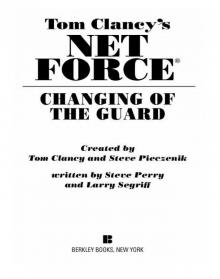 Changing of the Guard
Changing of the Guard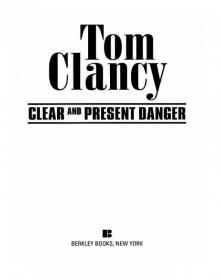 Clear and Present Danger
Clear and Present Danger Hounds of Rome
Hounds of Rome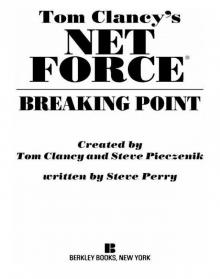 Breaking Point
Breaking Point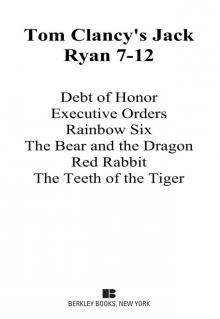 Tom Clancy's Jack Ryan Books 7-12
Tom Clancy's Jack Ryan Books 7-12 Full Force and Effect
Full Force and Effect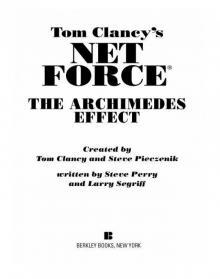 The Archimedes Effect
The Archimedes Effect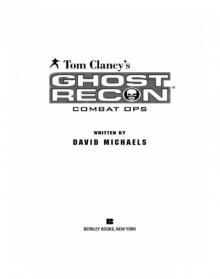 Combat Ops
Combat Ops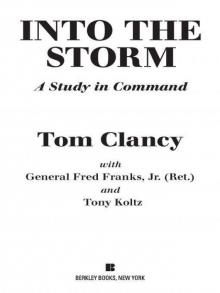 Into the Storm: On the Ground in Iraq
Into the Storm: On the Ground in Iraq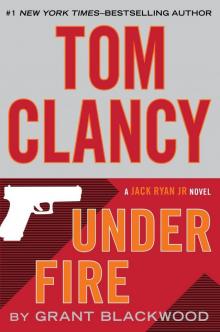 Under Fire
Under Fire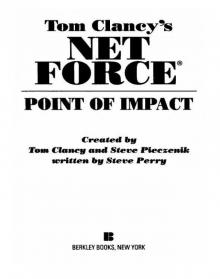 Point of Impact
Point of Impact Red Rabbit
Red Rabbit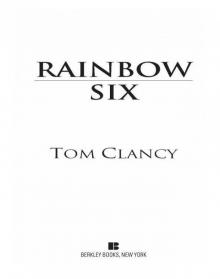 Rainbow Six
Rainbow Six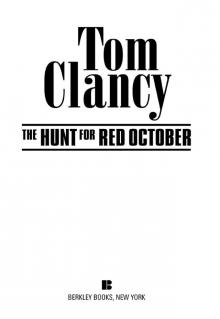 The Hunt for Red October
The Hunt for Red October The Teeth of the Tiger
The Teeth of the Tiger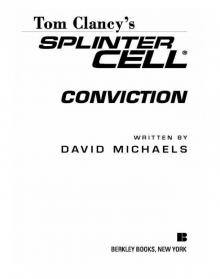 Conviction (2009)
Conviction (2009)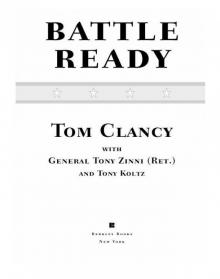 Battle Ready
Battle Ready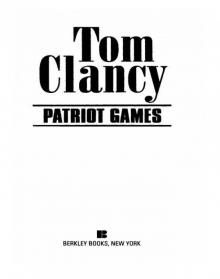 Patriot Games
Patriot Games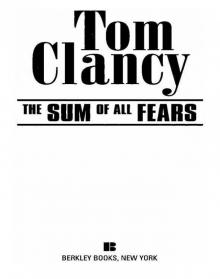 The Sum of All Fears
The Sum of All Fears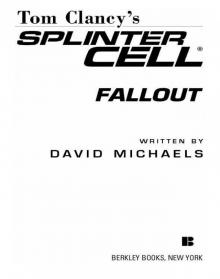 Fallout (2007)
Fallout (2007) Red Storm Rising
Red Storm Rising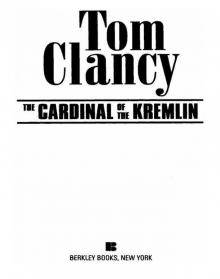 The Cardinal of the Kremlin
The Cardinal of the Kremlin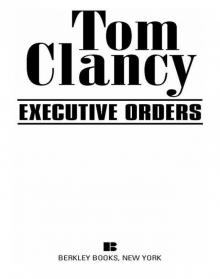 Executive Orders
Executive Orders Lincoln, the unknown
Lincoln, the unknown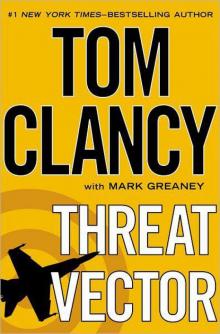 Threat Vector
Threat Vector The Hunted
The Hunted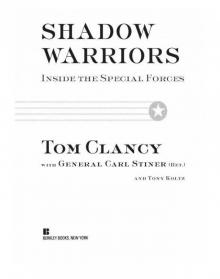 Shadow Warriors: Inside the Special Forces
Shadow Warriors: Inside the Special Forces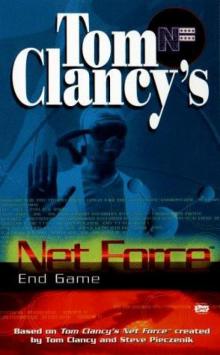 End Game
End Game Special Forces: A Guided Tour of U.S. Army Special Forces
Special Forces: A Guided Tour of U.S. Army Special Forces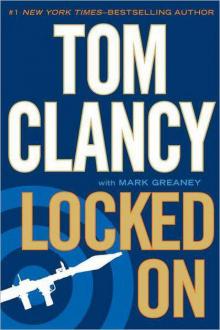 Locked On
Locked On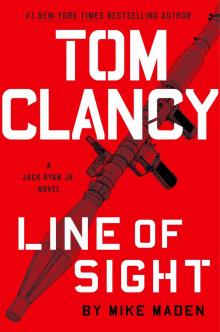 Line of Sight
Line of Sight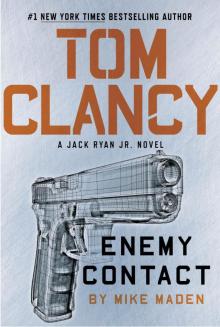 Tom Clancy Enemy Contact - Mike Maden
Tom Clancy Enemy Contact - Mike Maden Fighter Wing: A Guided Tour of an Air Force Combat Wing
Fighter Wing: A Guided Tour of an Air Force Combat Wing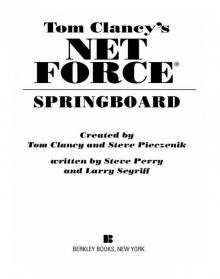 Springboard
Springboard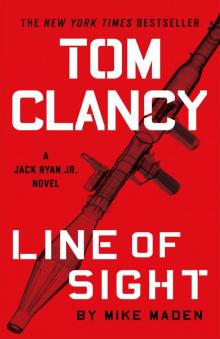 Line of Sight - Mike Maden
Line of Sight - Mike Maden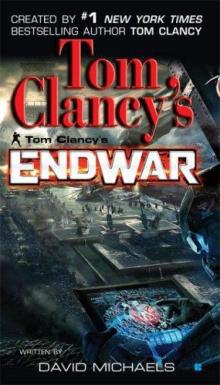 EndWar
EndWar Dead or Alive
Dead or Alive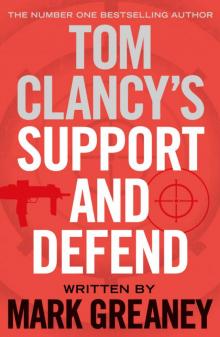 Tom Clancy Support and Defend
Tom Clancy Support and Defend Checkmate
Checkmate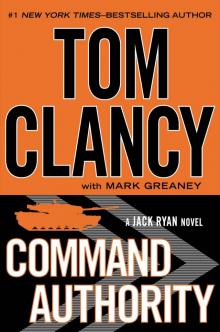 Command Authority
Command Authority Carrier: A Guided Tour of an Aircraft Carrier
Carrier: A Guided Tour of an Aircraft Carrier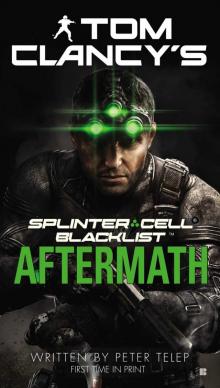 Blacklist Aftermath
Blacklist Aftermath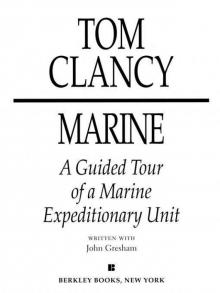 Marine: A Guided Tour of a Marine Expeditionary Unit
Marine: A Guided Tour of a Marine Expeditionary Unit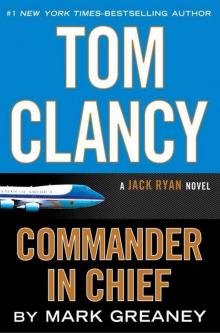 Commander-In-Chief
Commander-In-Chief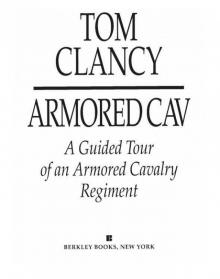 Armored Cav: A Guided Tour of an Armored Cavalry Regiment
Armored Cav: A Guided Tour of an Armored Cavalry Regiment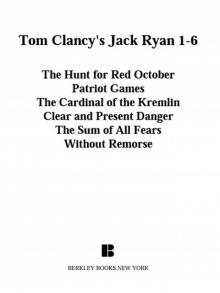 Tom Clancy's Jack Ryan Books 1-6
Tom Clancy's Jack Ryan Books 1-6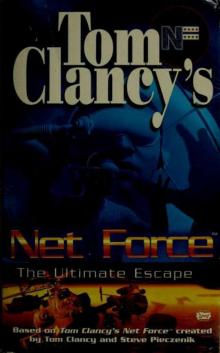 The Ultimate Escape
The Ultimate Escape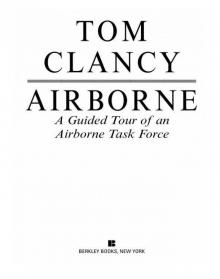 Airborne: A Guided Tour of an Airborne Task Force
Airborne: A Guided Tour of an Airborne Task Force Debt of Honor
Debt of Honor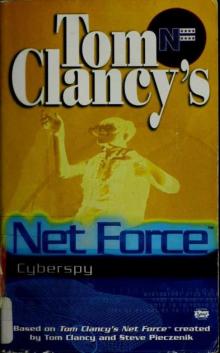 Cyberspy
Cyberspy Point of Contact
Point of Contact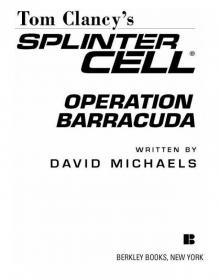 Operation Barracuda (2005)
Operation Barracuda (2005)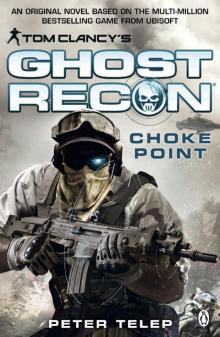 Choke Point
Choke Point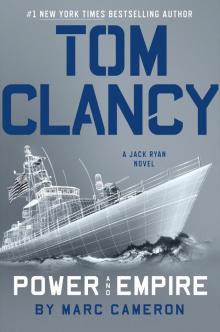 Power and Empire
Power and Empire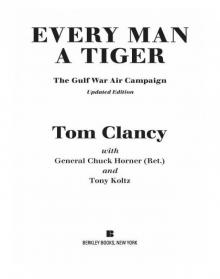 Every Man a Tiger: The Gulf War Air Campaign
Every Man a Tiger: The Gulf War Air Campaign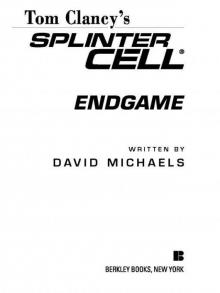 Endgame (1998)
Endgame (1998)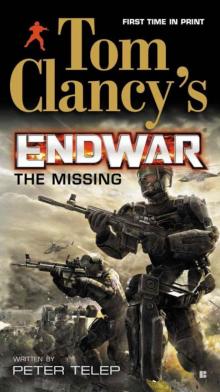 EndWar: The Missing
EndWar: The Missing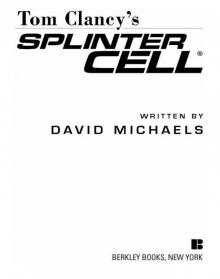 Splinter Cell (2004)
Splinter Cell (2004) The Great Race
The Great Race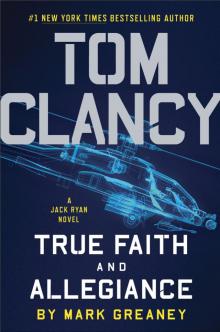 True Faith and Allegiance
True Faith and Allegiance Deathworld
Deathworld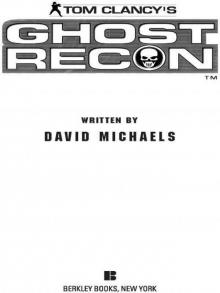 Ghost Recon (2008)
Ghost Recon (2008) Duel Identity
Duel Identity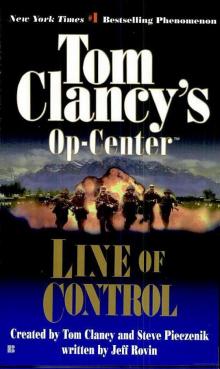 Line of Control o-8
Line of Control o-8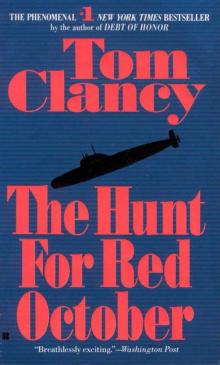 The Hunt for Red October jr-3
The Hunt for Red October jr-3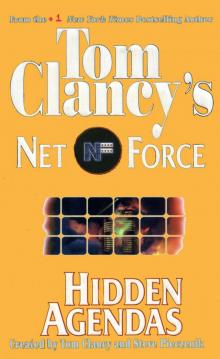 Hidden Agendas nf-2
Hidden Agendas nf-2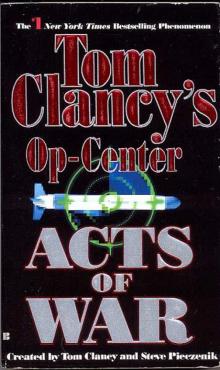 Acts of War oc-4
Acts of War oc-4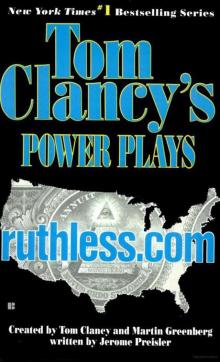 Ruthless.Com pp-2
Ruthless.Com pp-2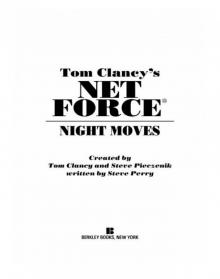 Night Moves
Night Moves The Hounds of Rome - Mystery of a Fugitive Priest
The Hounds of Rome - Mystery of a Fugitive Priest Into the Storm: On the Ground in Iraq sic-1
Into the Storm: On the Ground in Iraq sic-1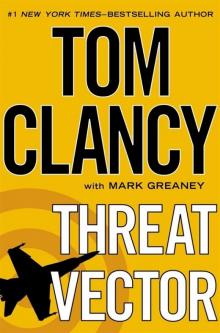 Threat Vector jrj-4
Threat Vector jrj-4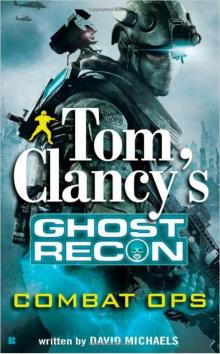 Combat Ops gr-2
Combat Ops gr-2 Virtual Vandals nfe-1
Virtual Vandals nfe-1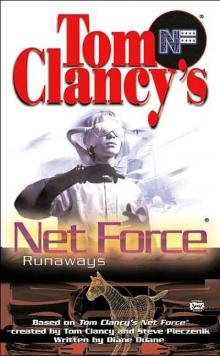 Runaways nfe-16
Runaways nfe-16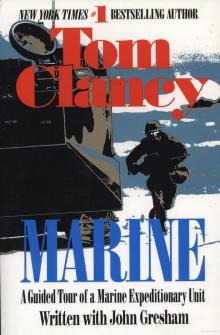 Marine: A Guided Tour of a Marine Expeditionary Unit tcml-4
Marine: A Guided Tour of a Marine Expeditionary Unit tcml-4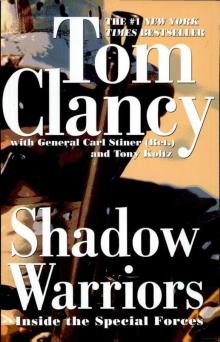 Shadow Warriors: Inside the Special Forces sic-3
Shadow Warriors: Inside the Special Forces sic-3 Jack Ryan Books 1-6
Jack Ryan Books 1-6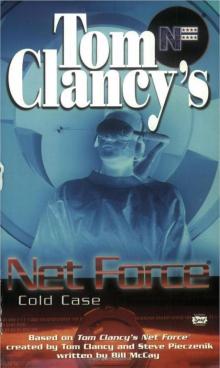 Cold Case nfe-15
Cold Case nfe-15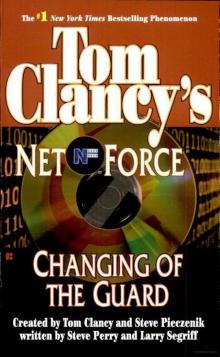 Changing of the Guard nf-8
Changing of the Guard nf-8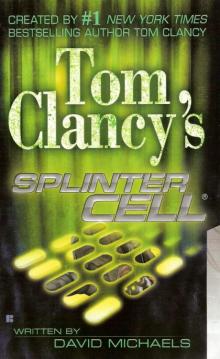 Splinter Cell sc-1
Splinter Cell sc-1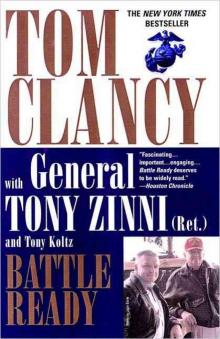 Battle Ready sic-4
Battle Ready sic-4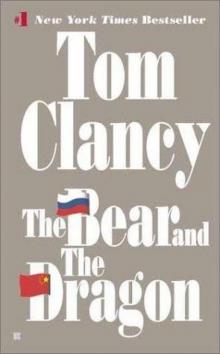 The Bear and the Dragon jrao-11
The Bear and the Dragon jrao-11 Fighter Wing: A Guided Tour of an Air Force Combat Wing tcml-3
Fighter Wing: A Guided Tour of an Air Force Combat Wing tcml-3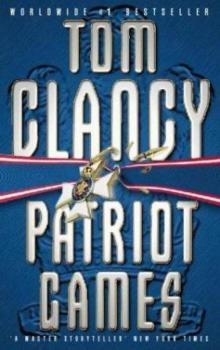 Patriot Games jr-1
Patriot Games jr-1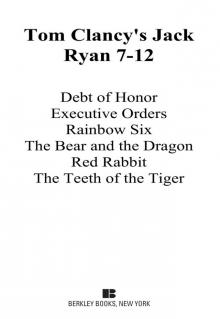 Jack Ryan Books 7-12
Jack Ryan Books 7-12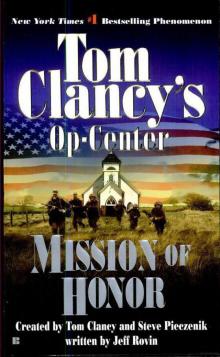 Mission of Honor o-9
Mission of Honor o-9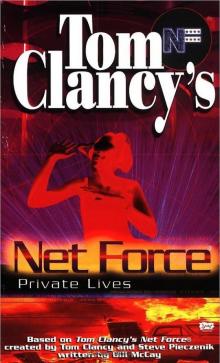 Private Lives nfe-9
Private Lives nfe-9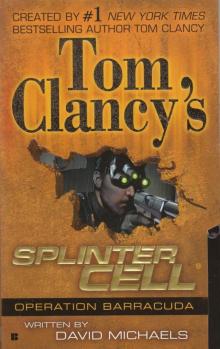 Operation Barracuda sc-2
Operation Barracuda sc-2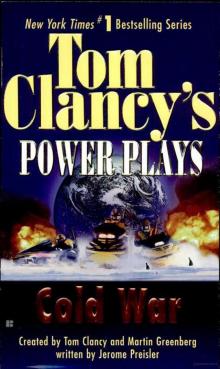 Cold War pp-5
Cold War pp-5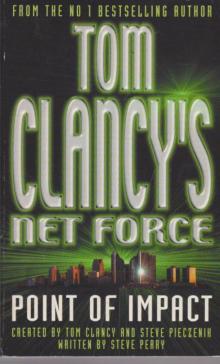 Point of Impact nf-5
Point of Impact nf-5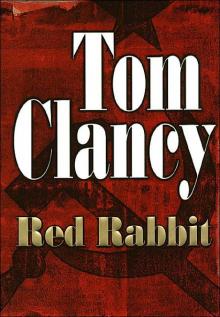 Red Rabbit jr-9
Red Rabbit jr-9 The Deadliest Game nfe-2
The Deadliest Game nfe-2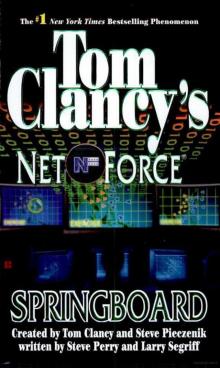 Springboard nf-9
Springboard nf-9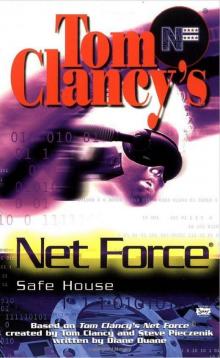 Safe House nfe-10
Safe House nfe-10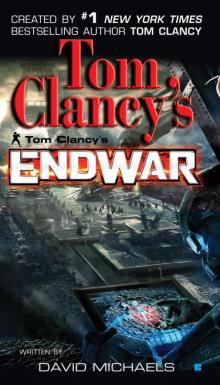 EndWar e-1
EndWar e-1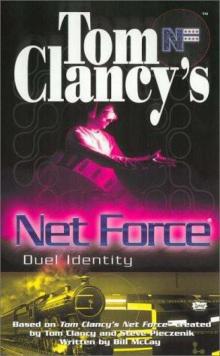 Duel Identity nfe-12
Duel Identity nfe-12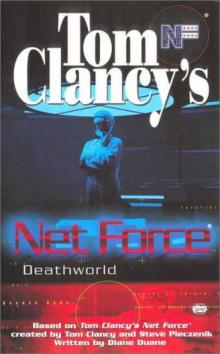 Deathworld nfe-13
Deathworld nfe-13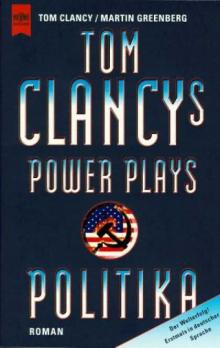 Politika pp-1
Politika pp-1 Rainbow Six jr-9
Rainbow Six jr-9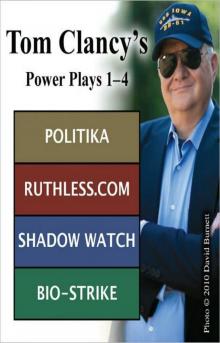 Tom Clancy's Power Plays 1 - 4
Tom Clancy's Power Plays 1 - 4 Endgame sc-6
Endgame sc-6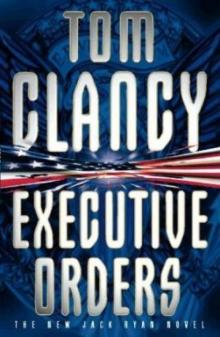 Executive Orders jr-7
Executive Orders jr-7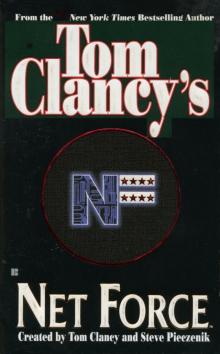 Net Force nf-1
Net Force nf-1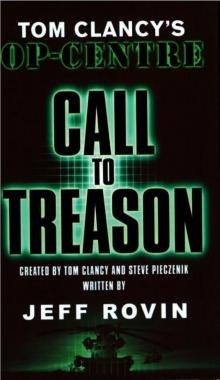 Call to Treason o-11
Call to Treason o-11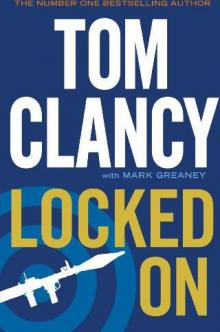 Locked On jrj-3
Locked On jrj-3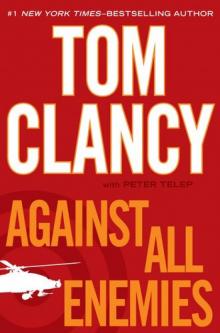 Against All Enemies
Against All Enemies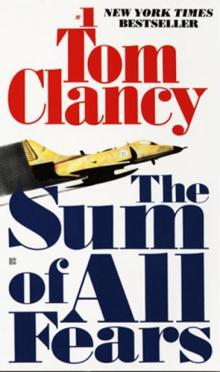 The Sum of All Fears jr-7
The Sum of All Fears jr-7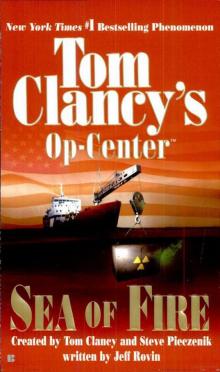 Sea of Fire o-10
Sea of Fire o-10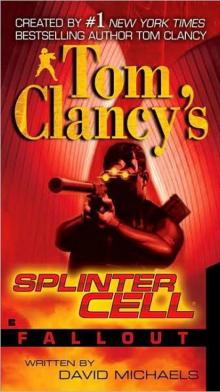 Fallout sc-4
Fallout sc-4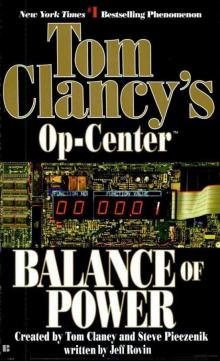 Balance of Power o-5
Balance of Power o-5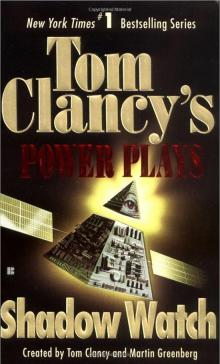 Shadow Watch pp-3
Shadow Watch pp-3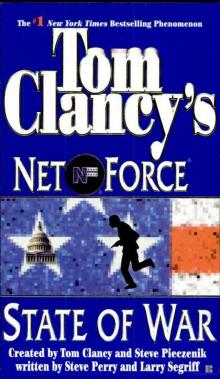 State of War nf-7
State of War nf-7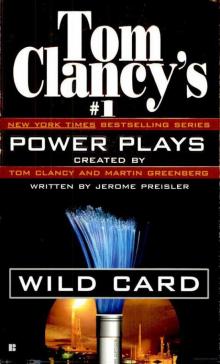 Wild Card pp-8
Wild Card pp-8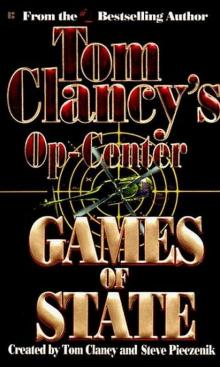 Games of State o-3
Games of State o-3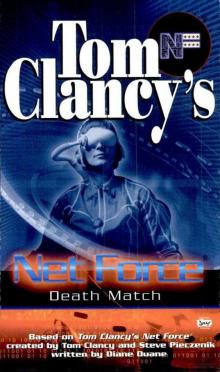 Death Match nfe-18
Death Match nfe-18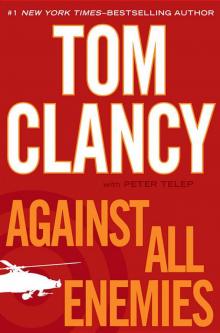 Against All Enemies mm-1
Against All Enemies mm-1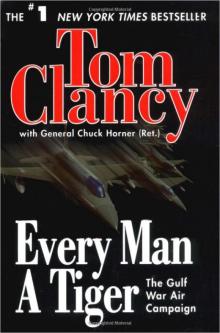 Every Man a Tiger: The Gulf War Air Campaign sic-2
Every Man a Tiger: The Gulf War Air Campaign sic-2 Cybernation nf-6
Cybernation nf-6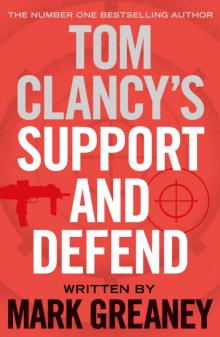 Support and Defend
Support and Defend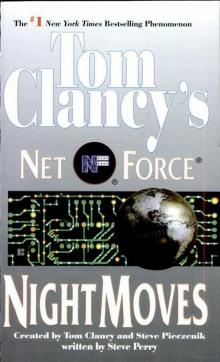 Night Moves nf-3
Night Moves nf-3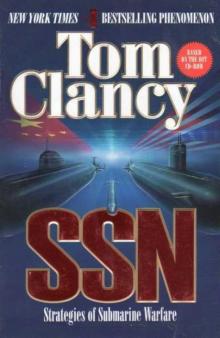 SSN
SSN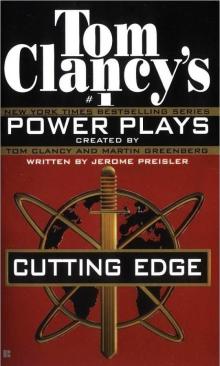 Cutting Edge pp-6
Cutting Edge pp-6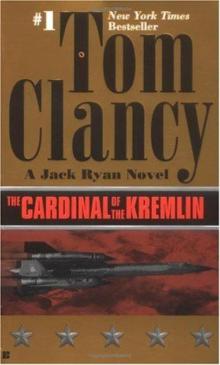 The Cardinal of the Kremlin jrao-5
The Cardinal of the Kremlin jrao-5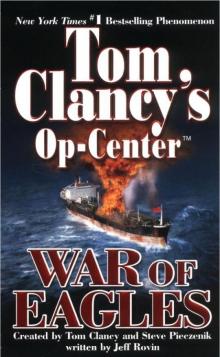 War of Eagles o-12
War of Eagles o-12 Op-Center o-1
Op-Center o-1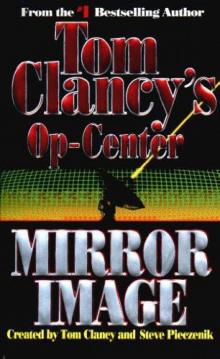 Mirror Image o-2
Mirror Image o-2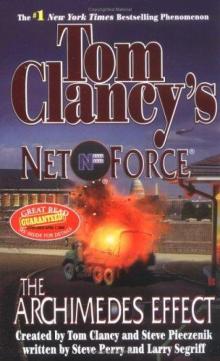 The Archimedes Effect nf-10
The Archimedes Effect nf-10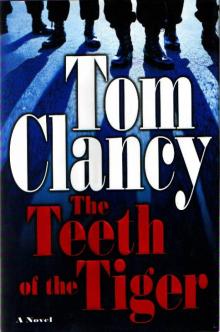 Teeth of the Tiger jrj-1
Teeth of the Tiger jrj-1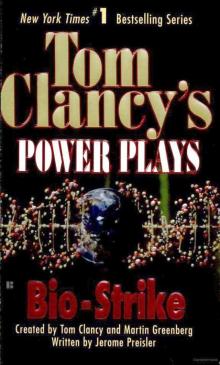 Bio-Strike pp-4
Bio-Strike pp-4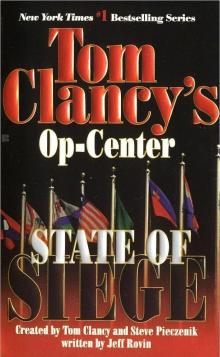 State of Siege o-6
State of Siege o-6 Debt of Honor jr-6
Debt of Honor jr-6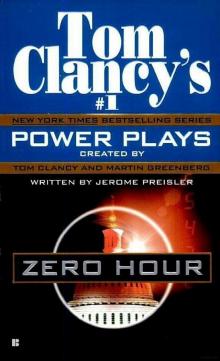 Zero Hour pp-7
Zero Hour pp-7 Ghost Recon gr-1
Ghost Recon gr-1 Command Authority jr-10
Command Authority jr-10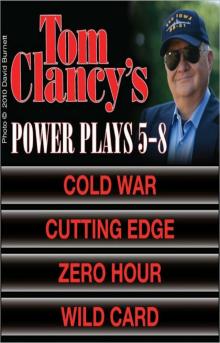 Tom Clancy's Power Plays 5 - 8
Tom Clancy's Power Plays 5 - 8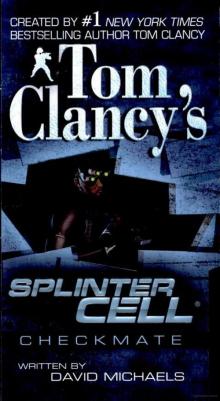 Checkmate sc-3
Checkmate sc-3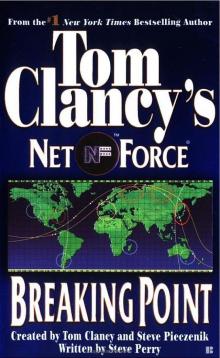 Breaking Point nf-4
Breaking Point nf-4 Gameprey nfe-11
Gameprey nfe-11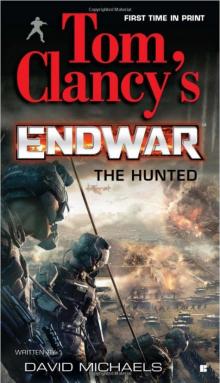 The Hunted e-2
The Hunted e-2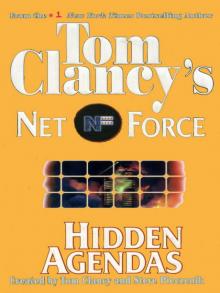 Hidden Agendas
Hidden Agendas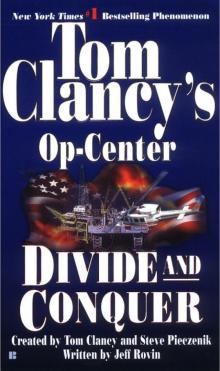 Divide and Conquer o-7
Divide and Conquer o-7